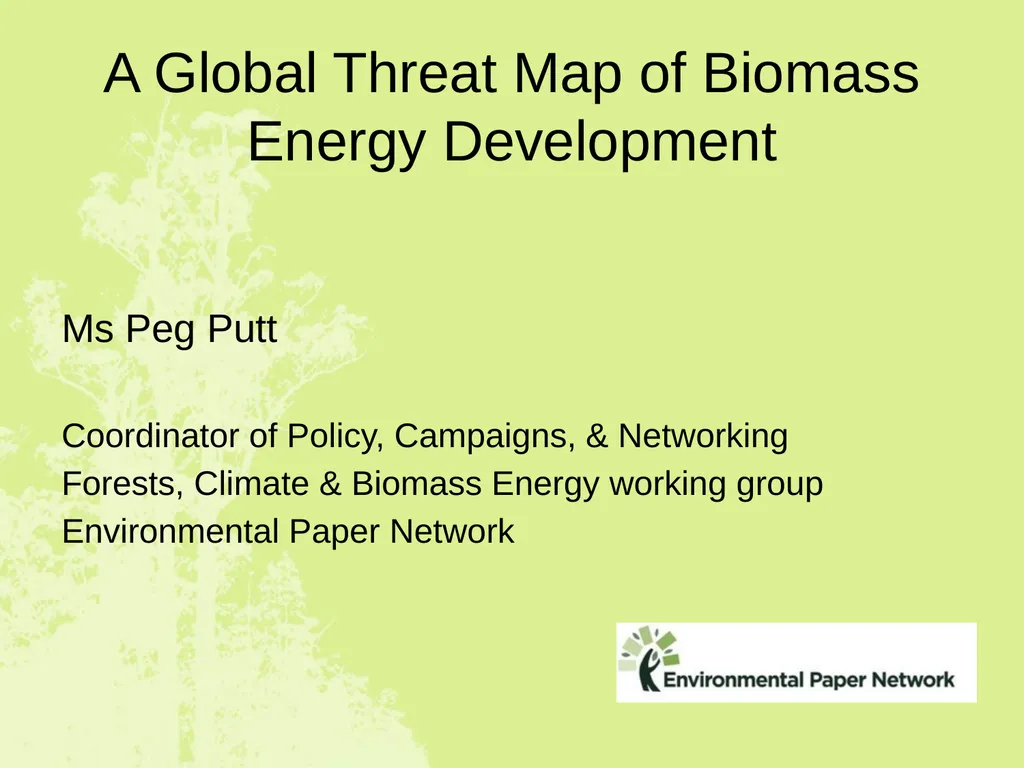
Author : danika-pritchard | Published Date : 2025-05-24
Description: A Global Threat Map of Biomass Energy Development Ms Peg Putt Coordinator of Policy, Campaigns, Networking Forests, Climate Biomass Energy working group Environmental Paper Network Who we are Forests, Climate Biomass Energy workingDownload Presentation The PPT/PDF document "" is the property of its rightful owner. Permission is granted to download and print the materials on this website for personal, non-commercial use only, and to display it on your personal computer provided you do not modify the materials and that you retain all copyright notices contained in the materials. By downloading content from our website, you accept the terms of this agreement.
Here is the link to download the presentation.
"A Global Threat Map of Biomass Energy Development"The content belongs to its owner. You may download and print it for personal use, without modification, and keep all copyright notices. By downloading, you agree to these terms.













